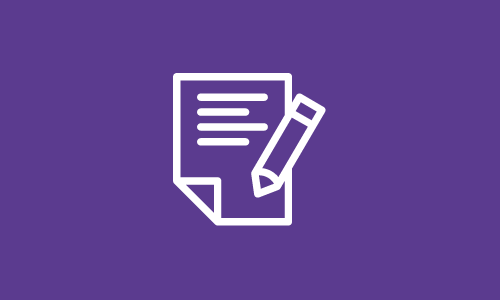Measurement & scaling


The potential of adaptive assessment
In this article, the authors explain how CAT provides a more precise, accurate picture of the achievement levels of both low-achieving and high-achieving students by adjusting questions as the testing goes along. The immediate, informative test results enable teachers to differentiate instruction to meet individual students’ current academic needs.
By: Edward Freeman
Topics: Innovations in reporting & assessment, Measurement & scaling, Student growth & accountability policies


Response time as an indicator of test taker speed: assumptions meet reality
The growing presence of computer-based testing has brought with it the capability to routinely capture the time that test takers spend on individual test items. This, in turn, has led to an increased interest in potential applications of response time in measuring intellectual ability and achievement. Goldhammer (this issue) provides a very useful overview of much of the research in this area, and he provides a thoughtful analysis of the speed-ability trade-off and its impact on measurement.
By: Steven Wise
Topics: Measurement & scaling, Innovations in reporting & assessment, School & test engagement


Effort analysis: Individual score validation of achievement test data
Whenever the purpose of measurement is to inform an inference about a student’s achievement level, it is important that we be able to trust that the student’s test score accurately reflects what that student knows and can do. Such trust requires the assumption that a student’s test event is not unduly influenced by construct-irrelevant factors that could distort his score. This article examines one such factor—test-taking motivation—that tends to induce a person-specific, systematic negative bias on test scores.
By: Steven Wise
Topics: Measurement & scaling, Innovations in reporting & assessment, School & test engagement


Evaluating content alignment in computerized adaptive testing
This article describes the decisions made in the development of CATs that influence and might threaten content alignment. It outlines a process for evaluating alignment that is sensitive to these threats and gives an empirical example of the process.
By: Norman Webb
Topics: Measurement & scaling


Of particular debate is the impact of transferring from a traditional public school to a charter school on student achievement and growth. We employ propensity score stratification and multilevel models to balance key covariates between treatment and control groups of a cross-state sample of students, which provides a more complex picture of charter school achievement effects in a quasi-experimental context.
By: Beth Tarasawa, Yun Xiang
Topics: Measurement & scaling, Student growth & accountability policies


Modeling student growth has been a federal policy requirement under No Child Left Behind (NCLB). In addition to tracking student growth, the latest Race To The Top (RTTP) federal education policy stipulates the evaluation of teacher effectiveness from the perspective of added value that teachers contribute to student learning and growth. Student growth modeling and teacher value-added modeling are complex.
Topics: Growth modeling, Measurement & scaling, Student growth & accountability policies


Modeling student test-taking motivation in the context of an adaptive achievement test
This study examined the utility of response time-based analyses in understanding the behavior of unmotivated test takers. For an adaptive achievement test, patterns of observed rapid-guessing behavior and item response accuracy were compared to the behavior expected under several types of models that have been proposed to represent unmotivated test taking behavior.
Topics: Measurement & scaling, Growth modeling, School & test engagement


